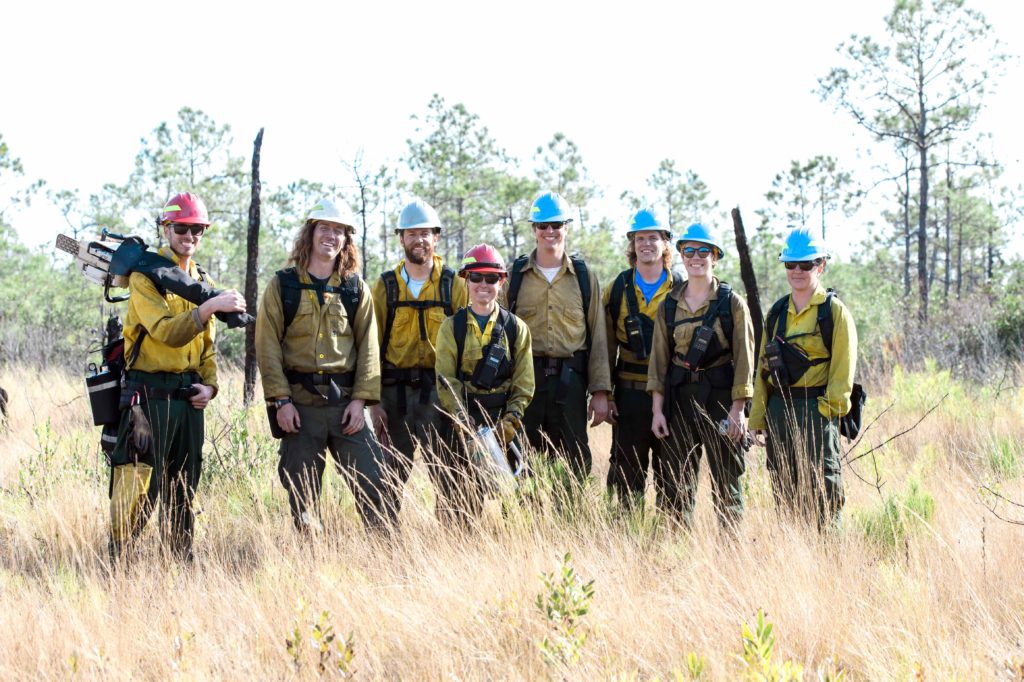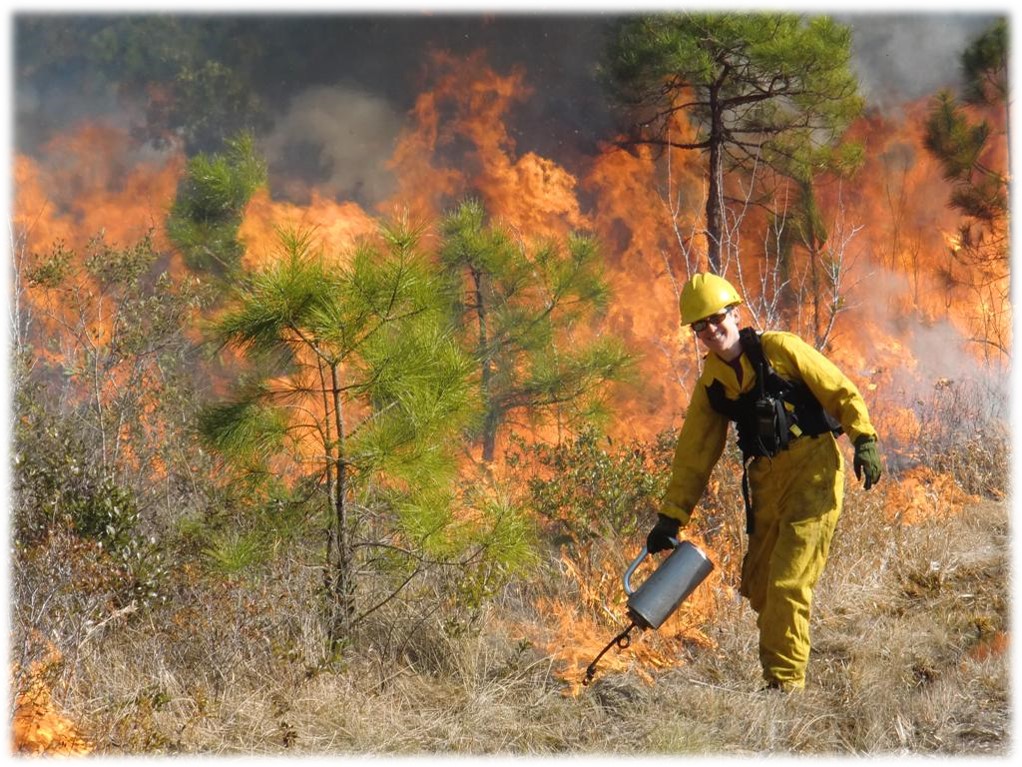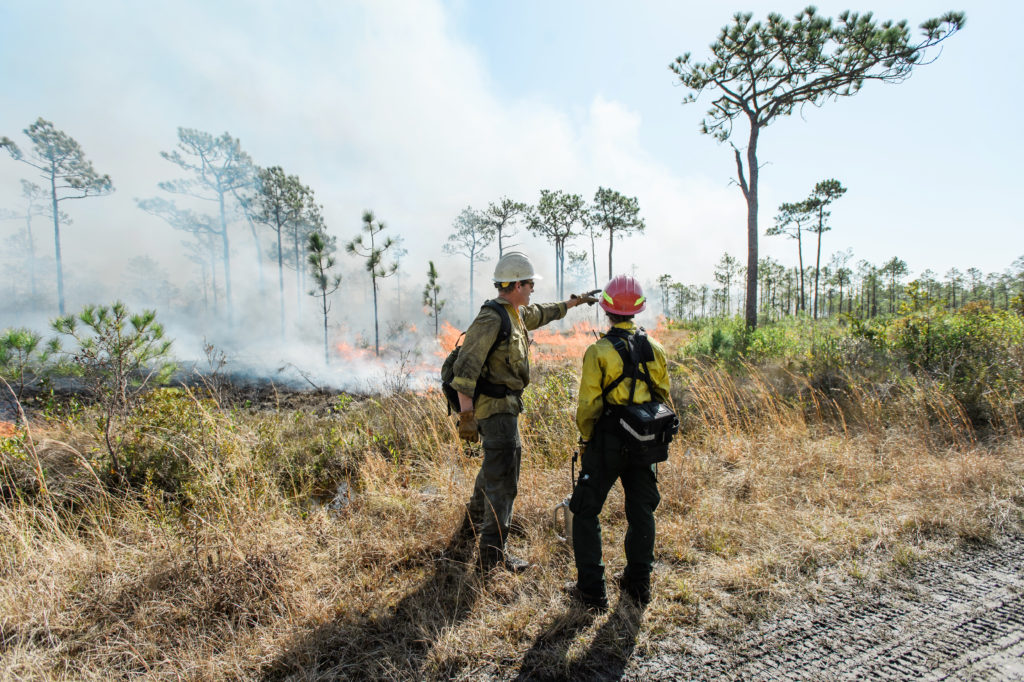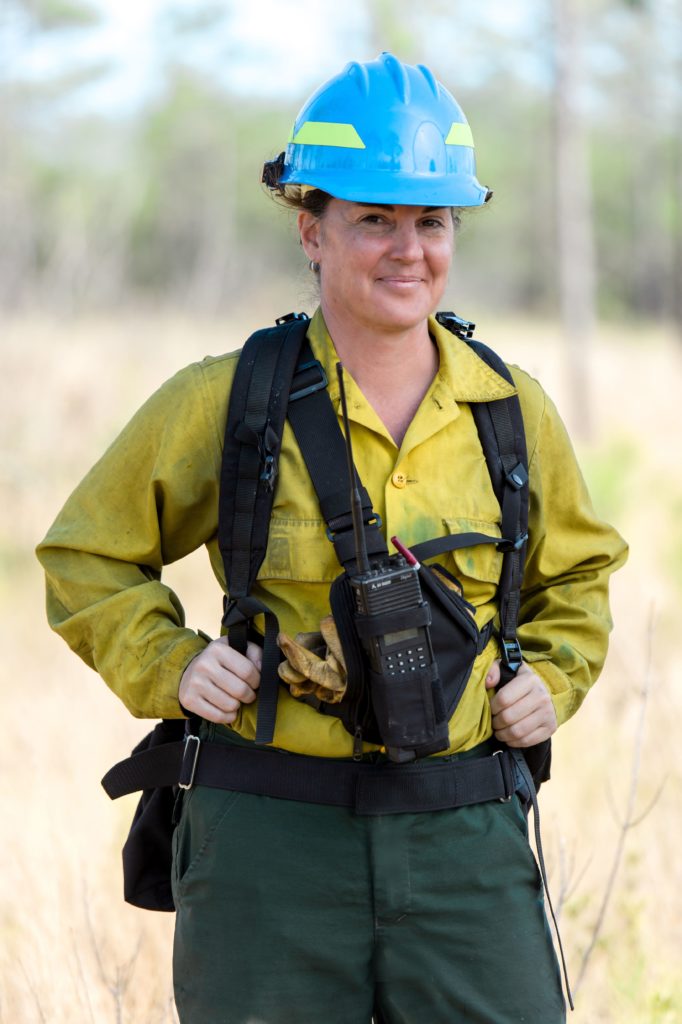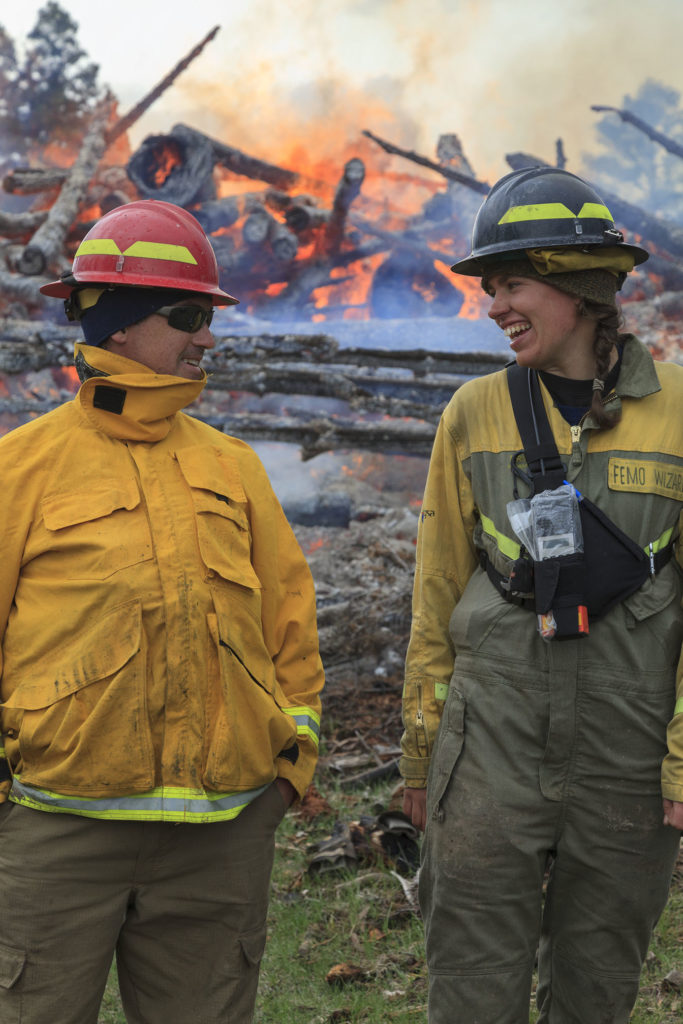Revitalizing forests and keeping communities safe with prescribed fire
Protecting our lands and maintaining healthy forest ecosystems.
The Moore Charitable Foundation promotes the use of prescribed burning to restore forests, maintain clean water, and lower the risk of wildfire.
Fire is essential to maintaining healthy forests. Prescribed burning, also called controlled burning, is the practice of deliberately setting and carefully managing fires under strict conditions approved and monitored by firefighting professionals. A centuries-old tradition, today the resurgent practice is used to protect and refresh forests by removing the dense vegetation build-up in a forest’s understory that fuels large wildfires. This practice also allows for indigenous plants and wildlife to thrive, restoring a more natural and diverse ecosystem.
Widespread public service campaigns like Smokey Bear conditioned many Americans to think all fire is bad. That mindset led to years of suppression that built-up dangerous amounts of debris on forest floors, helping to fuel catastrophic wildfires from Florida to the Pacific Northwest, burning millions of acres in the United States each year.
Mitigating wildfire risk in the West
In New Mexico and Colorado, The Moore Charitable Foundation works with non-profit organizations that help communities mitigate their wildfire risk through forest health and watershed best practices, including prescribed burning. We are proud members of The Nature Conservancy New Mexico’s Rio Grande Water Fund, a public-private initiative that is protecting forests and water for 1 million people in northern New Mexico and boosting local economies by creating jobs and wood for products. The project also is generating a sustainable source of funding for a 20-year program to restore 600,000 acres of forest north of Albuquerque, much of it through controlled burns.
We also work to encourage gainful employment for local youth and young adults through conservation-based projects that include fire management. Our support of groups such as the Forest Stewards Guild and Rocky Mountain Youth Corps helps to provide on-the-job training in burning techniques for the benefit of local forests and downstream water resources.
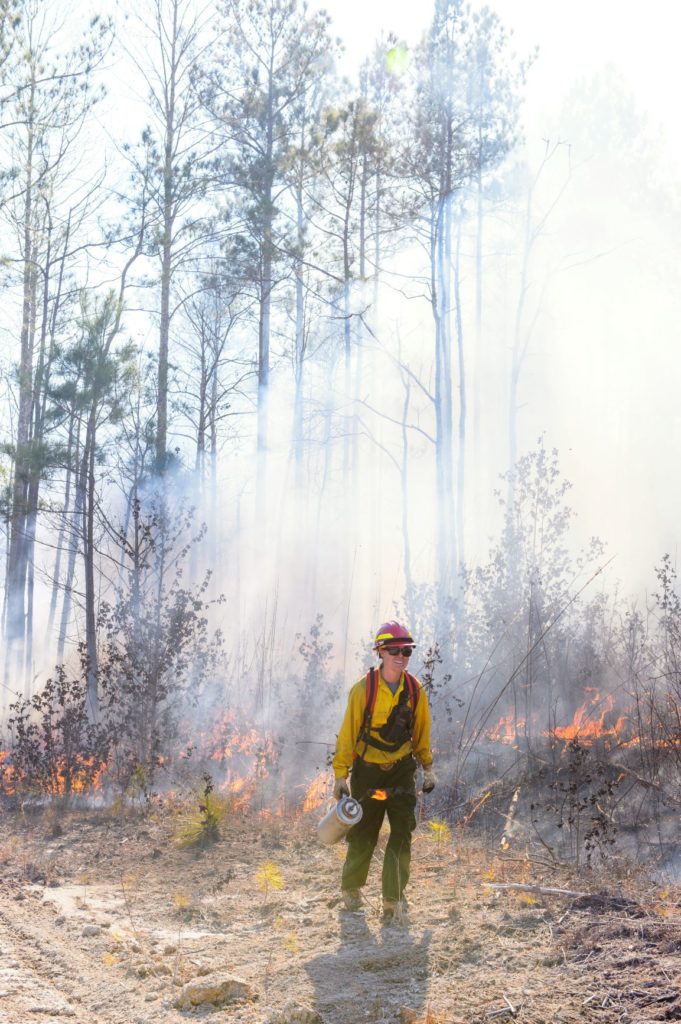
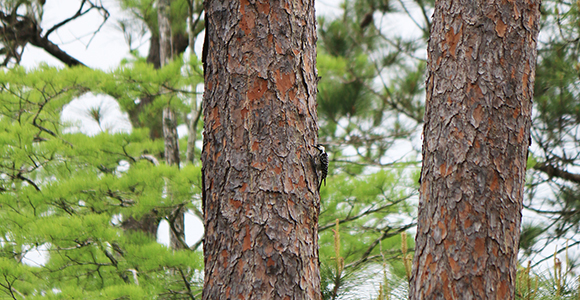
Restoring Longleaf Pine in the East
The Moore Charitable Foundation is helping to restore longleaf pine forests in America’s southeast. These trees support one of the world’s most diverse and imperiled ecosystems. The historic range of longleaf pine used to stretch over 90 million acres from Texas to Virginia, but because of development, logging, and other factors, the range declined to just 3 million acres. Today, thanks to prescribed burning and other conservation efforts, longleaf pine forests have rebounded to 4.7 million acres in the southeast United States, and the acreage continues to grow.
To prevent the loss of native species, nurture forest health, and protect surrounding communities from damaging wildfires, we must fight fire with fire. As part of the program to restore longleaf pine forests, The Moore Charitable Foundation and its North Carolina affiliate, The Orton Foundation, supports The Nature Conservancy North Carolina’s extensive controlled burning activities in the Cape Fear area and the Coastal Plain.
The Orton Foundation also is a member of the National Fish and Wildlife Foundation (NFWF)’s Longleaf Stewardship Fund, a public-private partnership that is expanding, enhancing and accelerating longleaf pine ecosystem restoration across longleaf pine’s historical range. Other partners include the Department of Defense, the U.S. Forest Service, the Natural Resources Conservation Service, the U.S. Fish and Wildlife Service, Southern Company, International Paper’s Forestland Stewards Initiative, and Altria Group.


